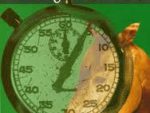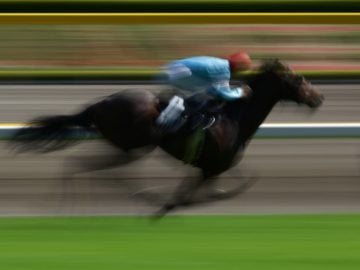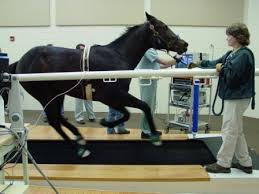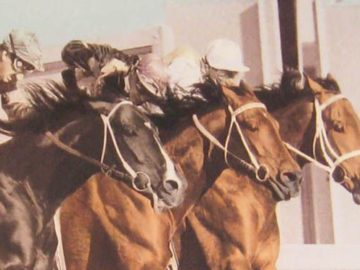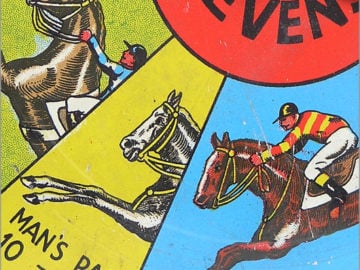Competitive Racing is the life-blood of the industry. This is true for both the punter and the owner. Not only does competitive racing encourage betting and make it more exciting, but present cost/stakes ratios make it imperative that competitive horses have every opportunity to race, writes Ian James.
Racing in South Africa is very much a mixed bag. We make little distinction between the ‘classic’ horse and the ‘handicapper’ either in the content of fields for the former or because of the inflexible race-figure system, in the allocation of weight to the latter.
‘Classic’ and ‘handicap’ racing are expected to achieve entirely different goals. Conditions racing is intended to measure the merit of performance at set weights while handicapping is intended to level the performance at different weights; the former is expected to establish the quality of competing individuals while the latter is expected to produce the closest possible finish.
The function of handicapping has always been betting while the function of conditions racing has been improvement of the breed.
For both forms of racing to properly fulfill their purpose an impartial system of evaluation free of arbitrary decisions and subjective criteria is an essential prerequisite.
It is contended that just as the winning post at Epsom has been the main determinant of quality, so must the order of finishing be a measure of a horse’s performance capability and the determinant of eligibility.
It is suggested that a ‘Performance-Index’(P-I) would not only establish such a merit order but would have the added advantages of impartiality, consistency and uniformity throughout the country.
The Index
To establish the base of the index, all horses should begin their careers with a P-I based on the overall standard of the racing district in which they first compete.
Because of the propensity for most good horses to not only race as two-year-olds but also to win at that age, it is suggested that the index-base be made up as follows: (at time of first start)
| Racing Centre | 2yo | 3yo | 4yo |
| Johannesburg | 1000 | 900 | 800 |
| Durban | 1000 | 900 | 800 |
| Cape Town | 1000 | 900 | 800 |
| Port Elizabeth | 900 | 800 | 700 |
| Bloemfontein | 700 | 600 | 600 |
| Kimberley | 500 | 400 | 300 |
Once the horse has raced, it’s P-I will change according to its performance. It is suggested that the following scale be used to evaluate performance and build the index:
Win: 200 points + 30 points per length by which won.
Second: 80 points – 10 points per length by which beaten.
Third: 40 points – 5 points per length by which beaten
Fourth: 20 points – 4 points per length by which beaten
Unplaced: nil points – 3 points per length by which beaten.
The above point-scale is an attempt to measure merit and to establish a relationship between the various performances in any given race.
Should a horse from a lower rated centre compete at a higher rated centre, it must be assumed to be up to that standard and incur the points differential between the centre-rated base.
When dealing with imported horses, one would calculate their performance figures on the above basis. The value of the centre-base (United Kingdom say 2000 to our 1000) would then be added to establish their P-I for competition in this country.
For such an index to be meaningful, it must not only establish the relative merit of individual horses but also reflect the strength of their performances. This can be achieved by ‘weighting’ the index according to the value and importance of particular races. The following weighting is suggested:
Group I: 50%
Group II: 33.3%
Group III: 25%
Major Feature: 20%
Minor Feature: 10%
Other Races: Nil
Increase points earned and reduce points lost by these percentages.
It may be considered prudent to build a sex allowance into the index. It would entail reducing the base figures by 250 points for fillies.
Handicapping
To use the P-I for handicapping purposes it is suggested that an allocation of 1kg per 100 points be applied. A winner would thus receive a minimum of 2 kgs penalty plus 1/3 kg for every length by which it won.
By allocating points to placed horses as well, one is changing the relationship between them and the winner but not as drastically as between the winner and unplaced horses. By varying the value of the points deducted for placed runs, good placed runs will count for something and bad placed runs will not count much more than a good unplaced run. This way, placed horses incur penalties in relation to unplaced runners, but receive an advantage in terms of the winner, which is surely the object of handicapping.
This is a departure from the racefigure system wherein the winner incurs a set penalty, which applies with very few exceptions, against all the other runners irrespective of their performance.
Unlike the race-figure system which is very rigid, with the P-I there is an immediate adjustment. These on-going adjustments will very soon establish the ‘class’ of all horses and make the placing of horses very rewarding to astute trainers and intelligent punters.
On the basis of 1 kg per 100 points on the P-I, the ‘divisions’ would look roughly like this:-
| P-I | Weight | |
| Bottom Division
(1-4 time winners) |
1000 to 2000 | 48-58 |
| Middle Division
(3-7 time winners) |
2000 to 3000 | 48 to 58 |
| Top Division
(7 time winners and upwards) |
3000 up | 48 to 58 |
It is suggested that the weight-scale be made up of units containing a minimum of .25 kgs. This corresponds very closely to the old ½ lb unit and would provide a total of 40 possible units between the top and the bottom weights.
Handicappers could split the P-I at their discretion in order to make up the divisions in divided races.
It is further suggested that a P-I between 900 to 1000 be the bottom-line of ability to justify a horse being kept in training at major centres.
In order to justify this, let us consider the average competitive horse racing at a major centre.
A competitive ‘maiden’ should earn as many points by running places as it lost in unplaced runs. After a fair number of runs, the P-I should approximate 1000 points.
Upon winning, its P-I would increase by at least 200 points. Should it win again it would be considered above average. It’s P-I would then be well above this base anyway.
Were it not to win another race, but manage to run a few more places, its P-I would approximate 1000 points within a reasonable time. It would be considered border-line and hardly worth being kept in training.
The bulk of any population will always be average and below average for any given faculty and thoroughbred horses are not an exception to the rule. The reality of our situation is that the majority of our horses fall into the ‘moderate’ category. While they may well never recover their cost, the more competitive among them should at least be given every opportunity to contribute towards their keep.
This will be achieved through the P-I because the nature of handicapping will then be flexible and non-punitive while producing an objective weeding-out process at the same time.
Eligibility
Eligibility for all races could be determined by the P-I as it is impartial, objective and would be uniformly applied throughout the country. The built-in ‘weighting’ system ensures that horses competing in good company would maintain relatively high P-I figures unless grossly overmatched. By fixing eligibility according to P-I ratings, over-matching would soon correct itself.
Eligibility for ‘Classics’ could be ascertained by dividing the P-I figure by the number of runs a horse has had. This would establish the merit of the individual performances of lightly raced horses.
Clubs could restrict ‘Plate’ races to horses with P-I ratings above a certain level and stage very competitive races. The owner should also benefit from this because the stakes for such races should obviously be higher than unrestricted maiden, novice and graduation plates.
Eliminations
Another advantage of a ‘Performance-Index’ would be to make the very contentious ‘Ten Unplaced Runs’ rule unnecessary. Because this rule makes no allowances for relative performances, its inflexibility has justifiably aroused much dissatisfaction and hostility.
No distinction is made between a horse that runs 5th say 3 lengths behind and one horse that runs tailed-off last (say 33 lengths behind) or runs 9th (say 10 lengths behind). These disparate performances are all classed as unplaced runs and contribute towards ineligibility.
There is such a vast difference between the merits of such runs that to treat them all the same is absolutely absurd. By the same token, a horse may scramble into 4th place say 12 lengths behind and that run ensures its further eligibility, while the horse that is only beaten, say 3 lengths, may well be eliminated from further competition on the course that suits it best.
The P-I will solve this problem. The more competitive horse will have the higher P-I and should have preference over the less competitive individual.
Other Advantages
In addition to other advantages, adoption of a P-I system would discourage attempts to hide a horse’s true ability. The publication of P-I figures in the racecard should produce a more informed and discerning betting public. A development which would be beneficial to the whole industry.
Breeders could also make use of a P-I. Because historical stake-earnings become grossly distorted by inflation and the importance of certain races change, P-I ratings would be a consistent measure of excellence.
A P-I rating at two, three and four years of age will tell us more about the class of horse than the existence or absence of black type in the catalogue does.
Arguments and complaints over ‘provincialism’ in handicapping matters would never arise as the P-I in effect would become a national Free Handicap arrived at through objective inputs of consistent values.
The Jockey Club has the facilities and is the appropriate body to keep such computerised statistics. It could easily implement a P-I to provide the industry with an up-to-date index reflecting the relative merit of every individual horse in the country.
We live in an electronic age and there is no reason why quality information should not be available to all involved in the industry at all times.
‹ Previous







